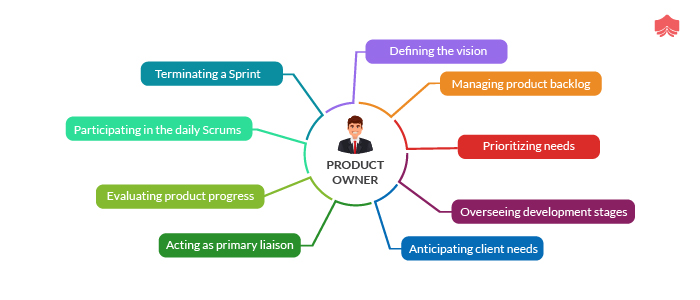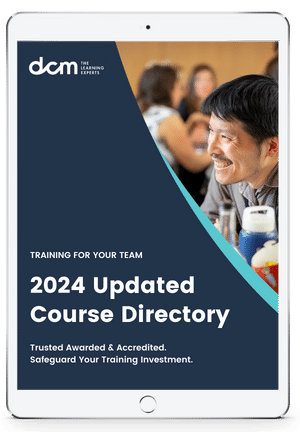A Product Owner is a role in a product development team or a Scrum team who is responsible for the product backlog, making sure that it is up-to-date in terms of priorities and has the items which translate back to the vision. The Product Owner represents the business or user and is accountable for collaborating with the consumer to define what features will be in the product release.
What do Product Owners do?
Since the time I embraced agile, I got to work with several Product Owners and mind you, this role is really critical as it handshakes at both the ends – the development team and the stakeholders. The Product Owner works with the stakeholders to get the right requirements, right in the sense, help the users to devise the requirements which they might not see or comprehend at that point. This not only improves the relationship with our customers but also helps to build up trust. And at the other end, the Product Owner helps the delivery team/development team understand the vision and the requirements. Hence, this role is kind of a bridge between the two ends, holding tight the two corners and effectively enhancing the smooth communication.
Roles and Responsibilities of Product Owner
According to Roman Pichler, the ultimate responsibility of a product owner is to ensure that the product creates value for its customers and users, as well as for the company. “Think of the product owner as the person who champions the product, who facilitates the product decisions, and who has the final say about the product,” he says. “This includes if and how feedback is actioned, and which features are released.”
The role and responsibilities of a Product Owner are too deep so as to make sure he/she understands the core of the product and too wide that collaboration is done at 360-degree level, being a liaison and face of the user.
Let’s look at the major responsibilities that this role demands:
1. Defining the vision
The Product Owner has the responsibility of creating a vision so that the development team clearly visualize the expected outcome by the user. It is the Product Owner who majorly interacts and collaborates with the users to understand their requirements, thus, it is really important to translate this in the form of a vision to the team. Also, it is equally significant, to communicate to the stakeholders the vision and goals so that every talk the same language and have an identical understanding of the outcome. To make sure every item from the goal is aligned to the business objectives, the Product Owner should create a product road map, which is a high-level, tactical graphical summary that shapes the vision and direction for the product.
2. Managing the product backlog
The most essential responsibility in a role as a Product Owner is managing the product backlog. Today’s market is really dynamic, every customer wants to stay at the top of the new features being introduced. Even the items in the product backlog might require some movements due to changing priorities. It’s the Product Owners responsibility to build up a stack of items in the backlog and prioritize them as per the business goals and the global approach. The product backlog is a dynamic list of items and as we call it in agile, it is a ‘live document’ that should be frequently updated based on changing project requirements all the way through development.
3. Prioritising needs
Making choices about the priority of product backlog items in order to deliver the maximum outcome. The Product Owner has to order the items in the Product Backlog to best achieve goals and missions. We live in a world where help is readily available in term of awesome tools, hence, there are heaps of tools to help Product Owners do this. The Product Owner is required to have the Backlog sequenced prior to the Sprint Planning Meeting. This means that each user story must be ordered by relative importance.
4. Overseeing development stages
Once we have the basic entities in place – vision, product backlog, and prioritization, the product owner has to make sure that he/she is participating in the overall development stages of the product. The team might need their Product Owner to get the clarity on a few queries or they might need to demo the committed item. The Product Owner will participate in the ceremonies with the team, in some ceremonies, this role can be active such as planning or backlog grooming but can be passive or inactive such as in the daily scrum.
5. Anticipating client needs
In today's competitive environment, it is really important for someone in the role of a Product Owner, to understand the client/customer’s needs. The product owner should understand the market, the competition, and the users’ pain points. With those valuable pieces of information, the product owner can determine what features should be implemented, and in what order, with respect to time and importance. Sometimes the Product Owner can help the customers configuring and penning down the items which they want but are not able to comprehend. And here communication plays a big role.
6. Acting as primary liaison
As we have talked about this at the start of our discussion, a product owner role is more into acting as a primary liaison between the teams and the customers. The person in this role has to make sure the information flow is quick and clear so that there is no interpretation or reading between the lines. The Product Owner has to make sure that the goal and the vision are correctly aligned with the work items on the product backlog. The Product Owner also acts as a liaison for business stakeholders and end-users, determining whether each story meets their shared expectations.
7. Evaluating product progress at each iteration
The product owner makes sure that the development works upon the priorities and monitors the progress of the items over the course of a sprint. Work that is either not complete or un-done needs to be re-prioritized or sequenced. The Product Owner makes sure that the development delivers the expected outcomes from the stories they worked upon and accepts them.
8. Participates in the daily Scrums, Sprint Planning Meetings, and Sprint Reviews and Retrospectives
Scrum ceremonies give a chance for the Product Owner to inspect and adapt. And as a result, being present at these ceremonies is identical to success. It is important for the product owner to join the scrum meetings, it not only keeps the development team up-to-date with the priorities but also helps the product owner understand the perspective of the team if there are any impediments.
9. Terminates a Sprint if it is determined that a drastic change in direction is required
If the Sprint goal has no meaning (will not deliver business value) because of the extreme change, the product owner can terminate the sprint. The termination is most frequently the outcome of an intense change in business priorities--something previously considered important is no longer important, or something even more significant is learned.
Product Owner & Scrum Master Reviews: Stories from Our Customers
Over the past 2 years, almost 3,000 learners (2,819 to be exact) have come to DCM to learn more about scrum and get certified. Read (and watch) their reviews to see how our courses have helped them achieve their career goals.
Inhouse Tailored Training for Your Team
We provide training programs that are developed by industry, for industry. Our range of programs can be delivered in a way that suits the needs of your business to offer your employees learning that is accessible and flexible.
We add value to your business by providing specialised, flexible and scalable training that meets your training needs. As your workforce grows and evolves, our globally certified and industry-validated learning solutions can assess, train and qualify your employees. For more information on how we can help please visit the in-house training page.
Membership, Stay Connected. Stay Relevant.
Completing a program is a point-in-time exercise that delivers huge value, but there is a next step to maintaining the currency of your skills in the ever-evolving professional world.
Membership is the next step.
A unique platform, membership is designed to ensure that you are in tune and up-to-date with the latest tools, trends and developments. Being a member provides just-in-time training and continuous professional development, and an exclusive and evolving content library informed by subject matter experts and industry leaders.







